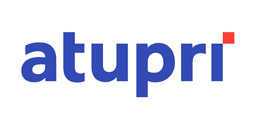Next year too, the premiums charged for mandatory Swiss health insurance will go up substantially. Residents of Switzerland have to count on an average price increase of 8.7 percent for obligatory insurance.
But many residents could avoid this insurance premium hike by migrating to a cheaper health insurance provider and using the cheapest managed care model.
“The average savings potential for 2024 is higher than the average climb in insurance premiums,” says moneyland.ch analyst Felix Oeschger.
Change of insurance company and model: 685 francs of potential savings per person
Switzerland’s independent online comparison service moneyland.ch calculated the potential savings for mandatory Swiss health insurance. The analysis accounted for 240,000 pieces of data for 2024 insurance premiums, weighted by the number of people insured by each insurance company, and by insurance models, deductible models, premium regions, age groups, and accident coverage.
“The results show that if every insured person were to move to the cheapest insurance company for their situation, residents would collectively save around 4 billion francs in 2024, and that is without changing to the cheapest insurance model,” says moneyland.ch CEO Benjamin Manz. That translates into an average of 455 francs per person in possible savings across the coming year.
For its study, moneyland.ch also calculated the costs that could potentially be avoided if residents adopted the cheapest available managed care models. If residents moved to the cheapest health insurance model as well as migrating to the cheapest insurance company, they could save an average of 685 francs per person in the coming year. For all residents collectively, those potential savings translate into around 6.1 billion francs.
Of course, those potential savings are purely hypothetical, because next year too, only a relatively small portion of residents will change their insurance providers. But the analysis clearly reveals the differences in the prices that different insurance companies charge for what is essentially the same mandatory health insurance.
Savings potential by age group
Swiss mandatory health insurance uses three different age groups: children (up to age 18), young adults (age 19 to 25), and adult (age 26 or older). Just as there are major differences in the insurance premiums charged across the different age groups, the potential savings also differ substantially.
Residents in the adult age group could save 502 francs, on average, by migrating to the cheapest insurance provider, without changing their insurance model. Young adults could potentially save 570 francs, on average. The average savings potential for a child is 211 francs.
With an additional move to the cheapest health insurance model, the average potential savings would be 787 francs per adult, 702 francs per young adult, and 272 francs per child.
Zurich has the highest savings potential
In 2023, the savings potential was highest in the canton of Ticino. In 2024, the highest potential savings could be achieved in the canton of Zurich. Adult residents of Zurich could save 636 francs per person, on average, in 2024, by simply changing to the cheapest insurance company. “In 2024, the canton of Zurich will experience a price hike of 8.3 percent, on average, for mandatory health insurance. Many residents could reduce that premium burden by changing insurance providers,” observes Felix Oeschger.
The potential savings of a move to the cheapest insurance provider are lowest in Appenzell Innerrhoden, at 239 francs per adult and year, followed by the canton of Uri with 299 francs per person and year. The reason for the lower savings potential is that differences in premiums charged by different insurance providers are smaller. But in these cantons too, residents are well advised to compare insurance premiums.
Change of insurance model: 328 francs of potential savings per person
The expensive standard model of mandatory health insurance gives the policyholder free choice of which doctors they visit. The cheaper managed care models require policyholders to get screened by a healthcare manager before receiving further treatment. In addition to the family doctor, telemedicine, and HMO managed care models, there are also other managed care models that combine these or include additional limitations.
Only a minority of residents use the cheapest available managed care model. By moving to the cheapest model offered by their existing health insurance providers, Switzerland’s residents could save an average of 328 francs per year in 2024. Across the population as a whole, that translates into 2.9 billion francs of potential savings.
Here too, there are notable differences between age groups. Adults (age 26 or older) could save much more money by moving to the cheapest insurance model than young adults (age 19 to 25) could.
While residents in the adult age group could save 402 francs, on average, in the coming year by switching to the cheapest insurance model, the savings potential for young adults is only 245 francs. One reason for this difference is that cheap managed care models are already more widely used by young adults.
As with young adults, residents in the child group could save much more by changing their health insurance providers (221 francs per year) than by changing their insurance model (68 francs per year).
Calculate potential savings based on your specific situation
The potential savings calculated by moneyland.ch are theoretical average values and are not truly representative of your personal savings potential. The amount you could potentially save on mandatory health insurance depends on your specific place of residence, your age, and which insurance you currently use. Depending on your estimated healthcare expenses, you could also potentially save money by changing your insurance deductible. You can find out exactly how much you can save using the comprehensive health insurance comparison on moneyland.ch, which accounts for all of these factors.
More on this topic:
Compare Swiss mandatory health insurance offers now
Get the detailed results of the moneyland.ch health insurance savings potential analysis (German PDF)
Methodology
- For its analysis, moneyland.ch evaluated premium data for 2024 from all Swiss mandatory health insurance providers published by the Federal Office of Public Health (FOPH). In total, more than 240,000 pieces of data from 39 health insurance providers were accounted for.
- moneyland.ch calculated the savings potential for the three age groups and all cantons based on weighted premium data. moneyland.ch calculated the difference between the real total insurance premiums and the optimal total insurance premiums for each canton and age group, across all insurance models.
- moneyland.ch calculated the savings potential for these three cases, among others (you can find the full analysis in the downloadable PDF): 1. Potential savings that could be achieved if residents were to move to the cheapest available insurance provider without changing their health insurance model or deductible; 2. Potential savings that could be achieved if residents were to move to the cheapest available insurance model, without changing their deductible or health insurance provider; 3. The potential savings that could be achieved if residents were to migrate to the cheapest insurance model offered by the cheapest available insurance provider, without changing their insurance deductibles. Residents could potentially achieve higher savings by optimizing their deductible and accident coverage. The analysis does not account for family discounts.
- Weighted analysis: The analysis accounts for insurance premiums by insurance provider, offer, canton, the premium region of a canton, deductible, age group, accident coverage, and insurance model. Additionally, calculations also account for the number of residents insured per insurance provider, insurance model, insurance deductible, premium region, and age group. Because there is no database that records the individual number of residents insured per insurance provider, premium region, and age group, and also accounts for insurance types (including insurance models and deductibles), the weighted analysis is based on estimates by moneyland.ch based on statistics from the FOPH. Statistics used include the most recent statistics for the use of different deductible models and insurance models by age group, and statistics for the numbers of customers per health insurance provider and canton.

 Deal of the Day
Deal of the Day 




